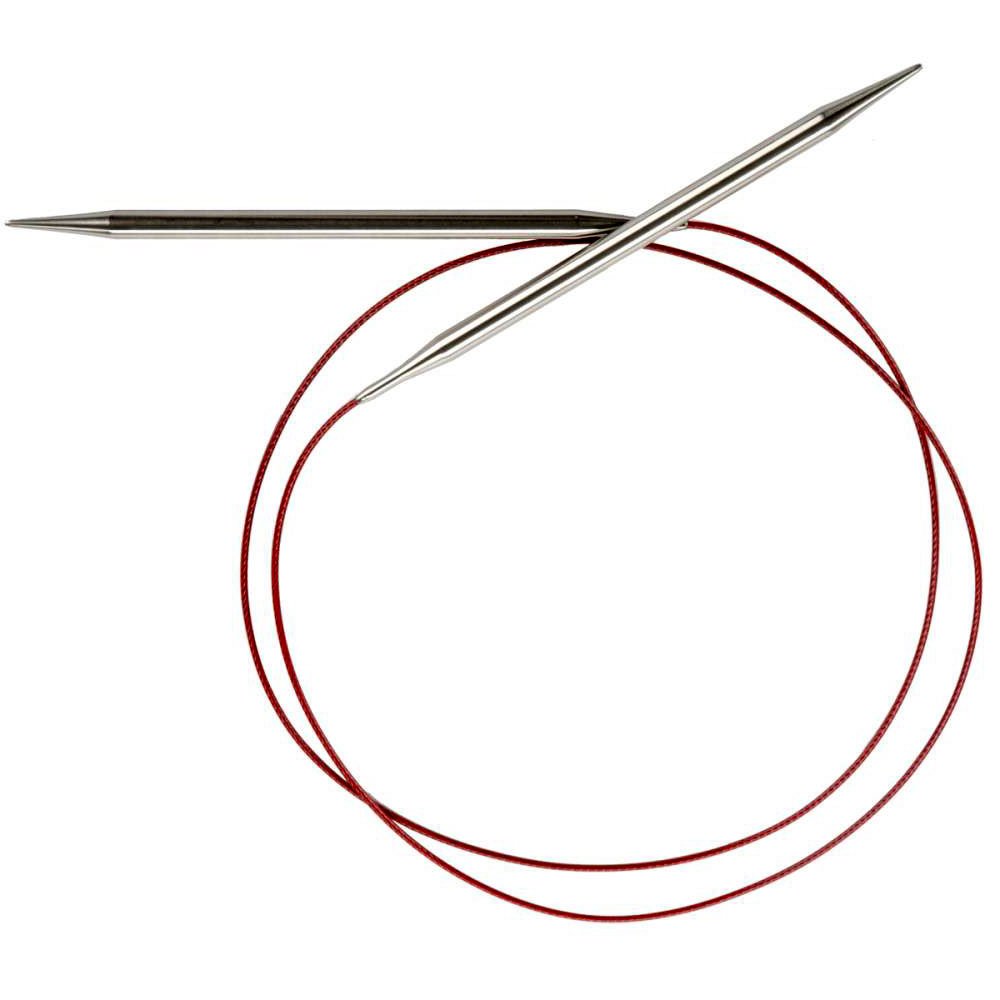
Choosing the right needle size is essential for creating a well-fitted and well-formed finished product. Here are some tips for selecting the right needle size for your project:
Check the pattern:
The pattern you’re working from should indicate the recommended needle size. This will give you a good starting point. The pattern may also indicate the gauge or tension you should be aiming for, which can help you determine if you need to go up or down a needle size.
Know your gauge:
Before starting your project, knit a small swatch to test your gauge. Gauge refers to the number of stitches and rows per inch in your knitting. If your stitches are too tight, try using a larger needle. If they’re too loose, try a smaller needle. Keep in mind that different yarns and stitch patterns can affect your gauge, so it’s important to test your gauge with the specific yarn and stitch pattern you’ll be using for your project.
Consider the yarn:
Different yarns may require different needle sizes to achieve the desired texture and drape. A thin, delicate yarn may require a smaller needle, while a bulky yarn may need a larger needle. The label on your yarn may indicate the recommended needle size, so be sure to check this before starting your project.
Experiment:
If you’re not sure which needle size to use, try knitting a small swatch with a few different needle sizes to see which produces the best result. This can help you determine which needle size will give you the look and feel you’re aiming for.
Check your tension:
In addition to gauge, it’s important to pay attention to your tension when knitting. Tension refers to how tightly or loosely you knit, and it can affect the drape and appearance of your finished product. If you tend to knit tightly, you may need to use a larger needle to achieve the desired tension. If you knit loosely, you may need to use a smaller needle.
Consider the type of project:
The type of project you’re working on can also influence the needle size you choose. For example, if you’re working on a scarf or shawl, you may want a looser, drapier fabric, so you may need to use a larger needle. If you’re knitting a sweater, you may want a tighter, more structured fabric, so you may need to use a smaller needle.
Think about the stitch pattern:
Different stitch patterns may require different needle sizes to achieve the desired effect. For example, a lace pattern may require a smaller needle to create a more delicate, lacy fabric. A cable pattern may require a larger needle to create more definition and texture.
Once you’ve chosen the right needle size for your project, it’s important to use that needle consistently throughout the project. Switching needle sizes can affect your gauge and tension, which can result in a poorly-fitted or misshapen finished product.
In addition to needle size, it’s also important to consider the type of needle you’re using. Different types of needles can affect your knitting experience and the appearance of your finished product.
Straight needles are the classic knitting needles with a point at one end and a knob at the other. They come in various lengths, from tiny 5-inch needles to long 14-inch needles. They are great for beginners and for working on flat pieces, such as scarves or dishcloths. Straight needles are easy to use and can create a wide range of stitch patterns.
Circular needles consist of two pointed needles connected by a flexible cord. They come in sizes ranging from tiny 9-inch needles to long 60-inch needles. They are ideal for working in the round, such as when making hats or sweaters. Circular needles can also be used for flat pieces, but they are particularly useful for larger projects that cannot fit on a straight needle.
Double-pointed needles are shorter needles with points at both ends, used for working small, circular objects like gloves or socks. They come in sets of four or five needles and range in size from tiny 4-inch needles to longer 8-inch needles. Double-pointed needles can be tricky to use at first, but they allow you to work on small, intricate projects with ease.
Interchangeable needles are sets of needles that allow you to switch out the needle tips and cords to create different needle lengths and sizes. They are a great investment for knitters who like to have a variety of needles on hand but don’t want to spend a lot of money. Interchangeable needle sets typically come with a range of needle tips and cords, making it easy to customize the perfect needle for your project.
In addition to needle size and type, it’s also important to consider the material your needles are made from. Different materials can affect the grip, weight, and durability of your needles.